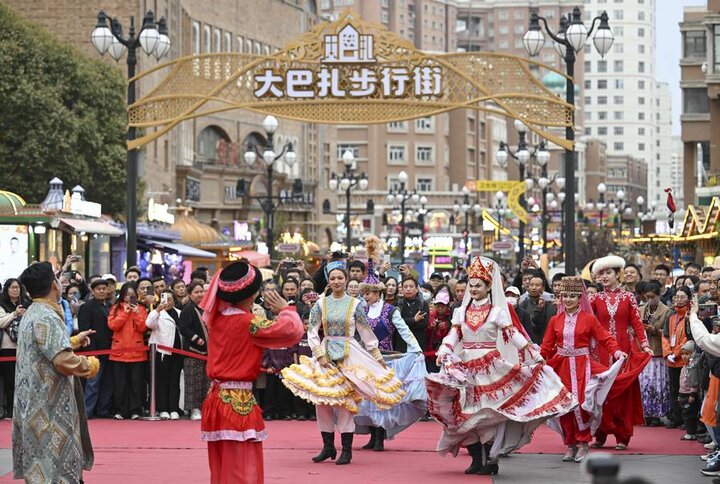Traveling to Xinjiang: How does the Chinese government treat Muslims?
According to Xinhua, Hazem Samir, deputy editor-in-chief of Egypt’s Al-Jomhuri newspaper, published a note referring to his recent trip to China’s Xinjiang Autonomous Region, arguing that objective observations and real data do not match what Westerners say about the situation of Muslims in Xinjiang, and that they have launched “human rights” attacks against the Chinese government for specific political and strategic reasons.
The important parts of Hazem Samir’s note are as follows:
The Xinjiang Uyghur Autonomous Region connects China to Central Asia. Due to its location as China’s western gateway for trade with Central Asia and Europe, the government has made great efforts to develop the region to make it the center of the grand plan of the “Belt and Road Initiative” (BRI).
Earlier this year, when I went on a business trip to Xinjiang, I was concerned about the approximately 12 million Uyghurs who live there, because I had read reports of human rights abuses against them. As a journalist who seeks the truth, I decided to investigate and uncover the truth of these controversial reports during my 12-day stay there.
I met with the general public in the region, both Muslim and non-Muslim, and inquired about these allegations and how the government (central China) was treating them; no one expressed dissatisfaction with the government and everyone was carrying out their duties in peace and harmony. All I saw in the region was hard work (of the government).
The Chinese government had launched major socio-economic projects, implementing large-scale development and training projects for unskilled workers to meet the needs of the labor market and attract investment in the tourism, mining, manufacturing, and agricultural sectors.
Because Xinjiang is rich in natural resources, especially oil, natural gas, and coal, the government has invested heavily in developing these resources and transforming the region into a key energy supplier. The government has also invested heavily in Xinjiang’s infrastructure, including highways, railways, logistics centers, and energy pipelines, to support the region’s growth and its pivotal role in the Belt and Road Initiative, a region that connects China to Central Asia and beyond.
Customs data show that Xinjiang leads China’s overall exports to five Central Asian countries: Kazakhstan, Tajikistan, Kyrgyzstan, Turkmenistan, and Uzbekistan; in 2023, these exports reached 246.57 billion yuan ($34.25 billion), up 23.2 percent from the previous year.
Unlike Western economies, China is more than willing to share its vast experience of economic and technological progress with developing countries to help build a prosperous future for all; And this is what he calls “a shared future for humanity.”
Having studied China for many years, I was not surprised by the stark contrast between Western images and false interpretations of Xinjiang and the reality of the region; Westerners portray Xinjiang as a place of oppression (of the Uyghurs), while in reality, it is an engine of growth for various ethnic groups for China and the countries along the Belt and Road Initiative.
(By traveling to Xinjiang) I understood why China is facing a flood of criticism from the Western media regarding the Uyghurs in Xinjiang and China’s relations with developing countries. This is for two reasons: first, Western countries are trying to undermine China’s emergence as a major power on the world stage, and second, they fear that the Belt and Road Initiative will transform the Western-controlled international order into a multipolar system based on justice and cooperation; The big change that the Belt and Road Initiative is capable of implementing.

